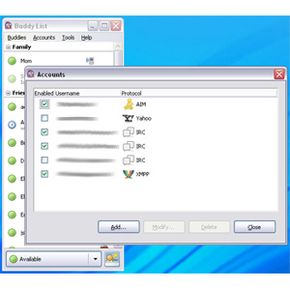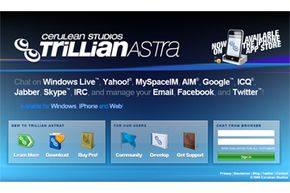Ever since people began communicating over computer networks, they've found faster and more convenient ways to keep in touch. Instant messengers provide this speed and convenience, whether you're on a private network or on the Internet. The convenience is limited, though, when your friends are all on different instant messenger services.
In the early 1990s, the typical commercial online service provider required you to install its proprietary client application on your computer if you wanted to connect to its service. Popular companies like America Online (AOL) each developed their own instant message protocols that worked only with their client software. If you wanted to send messages on a particular service, you had to use that company's client software.
Advertisement
Even today, that's still mostly the case. What if you're using AOL Instant Messenger (AIM), but you want to keep in touch with friends on Yahoo or MSN? Should you install the application for each protocol, or should you try to talk your friends into AIM instead?
There's an option that lets you stay connected to everyone without installing individual clients on your computer: Use an all-in-one instant messenger. These programs can connect to several instant message protocols at one time. Plus, they often have features to merge, organize and customize all your instant messenger contacts.
This article explains why you might use all-in-one messengers, describes the technology behind the software and profiles the different applications you can choose from.
Advertisement



